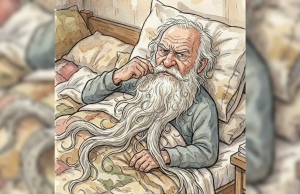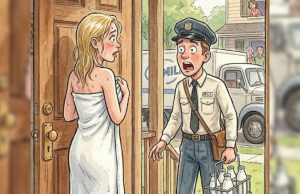
9 Things Grandma Never Threw Away
1. Fabric Scraps and sacks.
Old bedding or towels would be cut down and repurposed for other things like clothing. Because resources were so limited, people saved every scrap of fabric they came across, including food sacks. Things like sugar, flour, animal feed, and potatoes came in large sacks that were generally made from cotton. The resourceful women of the time began using these bags to make all kinds of household items, including clothing, diapers, and curtains. As it turns out, the mills caught wind of this and began printing designs and colors on the sacks to make them more aesthetically pleasing. Proving the large corporations do have the capacity to be thoughtful and selfless.
2. Newspapers

The uses for old newspapers are endless. They can be used as kindling, as craft paper, as wrapping paper, as insulation, as linings for birdcages and boxes, and a whole heap of other things besides. Our grandparents knew how to use every last bit of anything that came into the house!
3. Household Items Such as String and Rubber Bands
These were repurposed as often as possible to mend clothes quickly and easily. They were also used to fashion toys for kids, such as slingshots that could be used to hunt small animals for dinner such as squirrels. Additionally, families could keep important paperwork, cards, or handwritten recipes together in one place.
4. Buttons
Grandma would never have let good shirt buttons go to waste! If an old shirt starts to fall apart, reuse the fabric and put the buttons aside somewhere safe. Use your stashed buttons to replace missing buttons on other pieces of clothing, or on clothes you make from scratch!

5. Jars, Jugs, Boxes, & Other Containers
Many food items come in plastic or glass containers, and those containers can all be reused in hundreds of ways! Use larger jars to store bulk ingredients in your pantry or homemade spice mixes, and smaller jars to keep track of screws or nails in the garage.
6. Household Items Such as Hygiene Products
People may not waste time trying to get the last of their soap, toothpaste, or shampoo out of the bottle. However, people living through the Depression would use every last drop, including saving and then combining them. The same is true for candle wax, which was often used to light a home or generate a little heat in extreme cases.
7) Bacon Grease
Everyone knows that frying your food in bacon grease gives a wonderful flavor and that is reason enough to save it back. But, during World War II there were drives to collect bacon grease and other drippings to be taken to collection centers and used in the production of bombs. Earlier in the Depression, bacon grease, if you had it, might have replaced butter on your bread and in many recipes.
8. Aluminum Foil
It can be rewashed and used again to store food or cook food over an open flame. But foil also comes in handy as a scrub brush when wadded up into a ball or sponge shape.

9. Seeds, Perhaps the Most Important Household Item
While self-explanatory, this household item is definitely noteworthy. By saving seeds, families had the opportunity to grow and regrow crops and herbs. This ensured they could both continuously have access to food and add more flavor to that food.
Saving common household items was essential to keep homes afloat during a dark time in History. However, we now know that it can also benefit the environment and help those with fewer readily available resources.




















